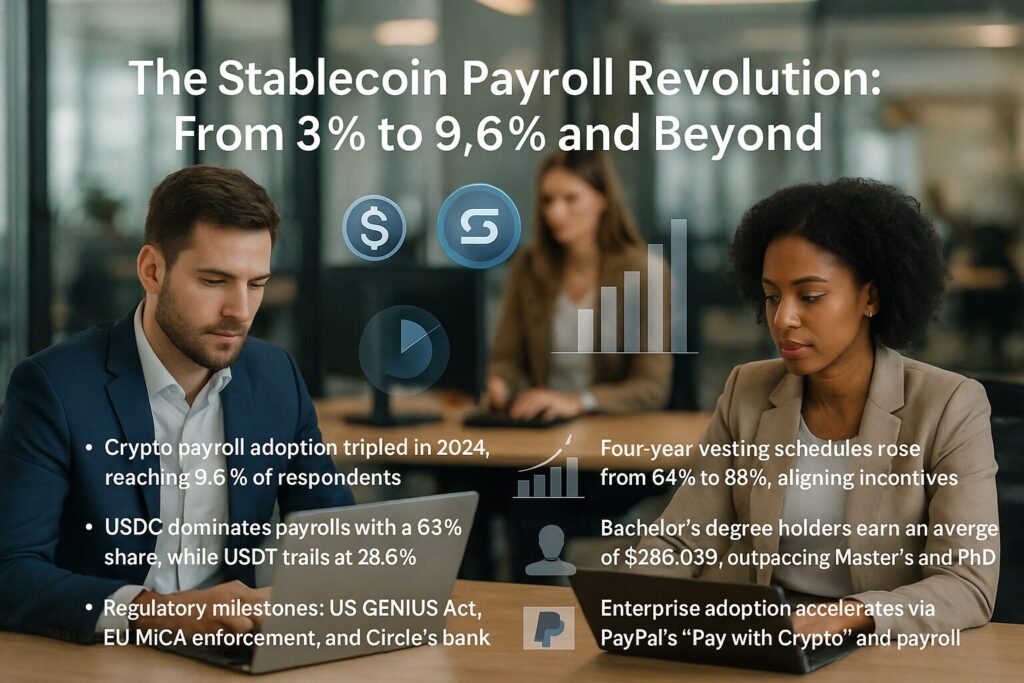
Main Points:
- Crypto payroll adoption tripled in 2024, reaching 9.6% of respondents
- USDC dominates payrolls with a 63% share, while USDT trails at 28.6%
- Total stablecoin market capitalization soared to $268.6 billion by mid-2025
- Four-year vesting schedules rose from 64% to 88%, aligning incentives long term
- Bachelor’s degree holders earn an average of $286,039, outpacing Master’s and PhD holders
- Regulatory milestones: US GENIUS Act, EU MiCA enforcement, and Circle’s bank charter pursuit
- Enterprise adoption accelerates via PayPal’s “Pay with Crypto” and payroll platforms
1. The Triple Surge: Crypto Payroll on the Rise
Over the past year, the proportion of crypto-industry professionals receiving compensation in digital assets has jumped from 3% to 9.6%, marking a three-fold increase in payroll adoption. This surge reflects both a maturing blockchain ecosystem and growing institutional confidence in stablecoins as a mechanism for remuneration. Companies ranging from nimble startups to decentralized autonomous organizations (DAOs) are increasingly experimenting with hybrid fiat-plus-crypto models, tapping into the benefits of faster cross-border settlements and programmable financial workflows.
[Insert Figure 1: Growth of Crypto Payroll Adoption Chart here]
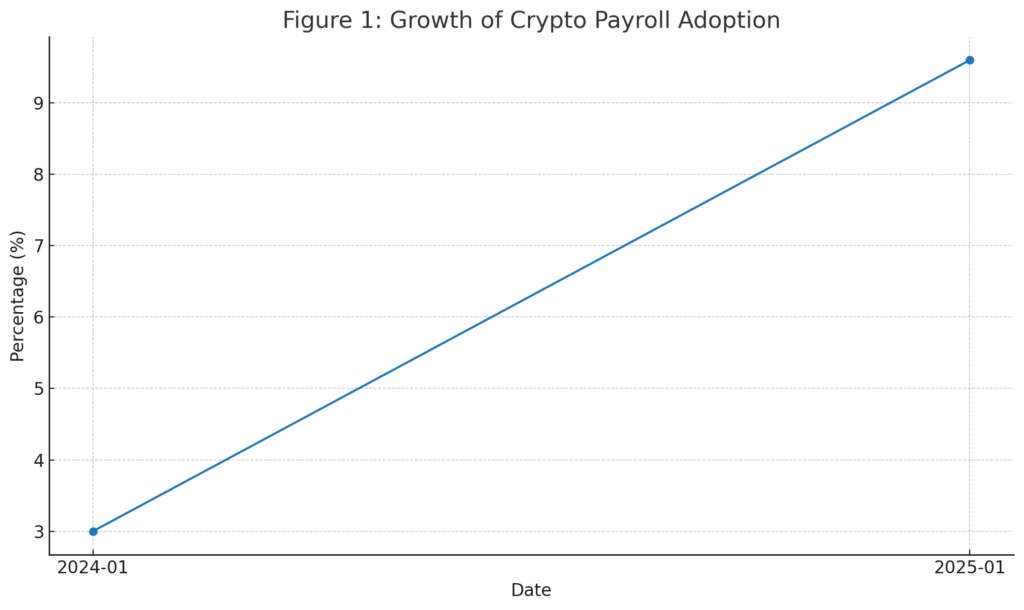
2. Why USDC Leads the Pack
Circle’s USD Coin (USDC) has emerged as the clear favorite for payroll, capturing 63% of all stablecoin-based salaries, despite Tether’s USDt (USDT) dominating global trading volume. This preference stems from USDC’s regulatory transparency, monthly reserve attestations, and integration with corporate financial infrastructure. Intriguingly, major payroll platforms such as Deel, Remote, and Rippling do not offer USDT, further cementing USDC’s leadership in enterprise payroll solutions.
[Insert Figure 2: USDC vs USDT Share Pie Chart here]
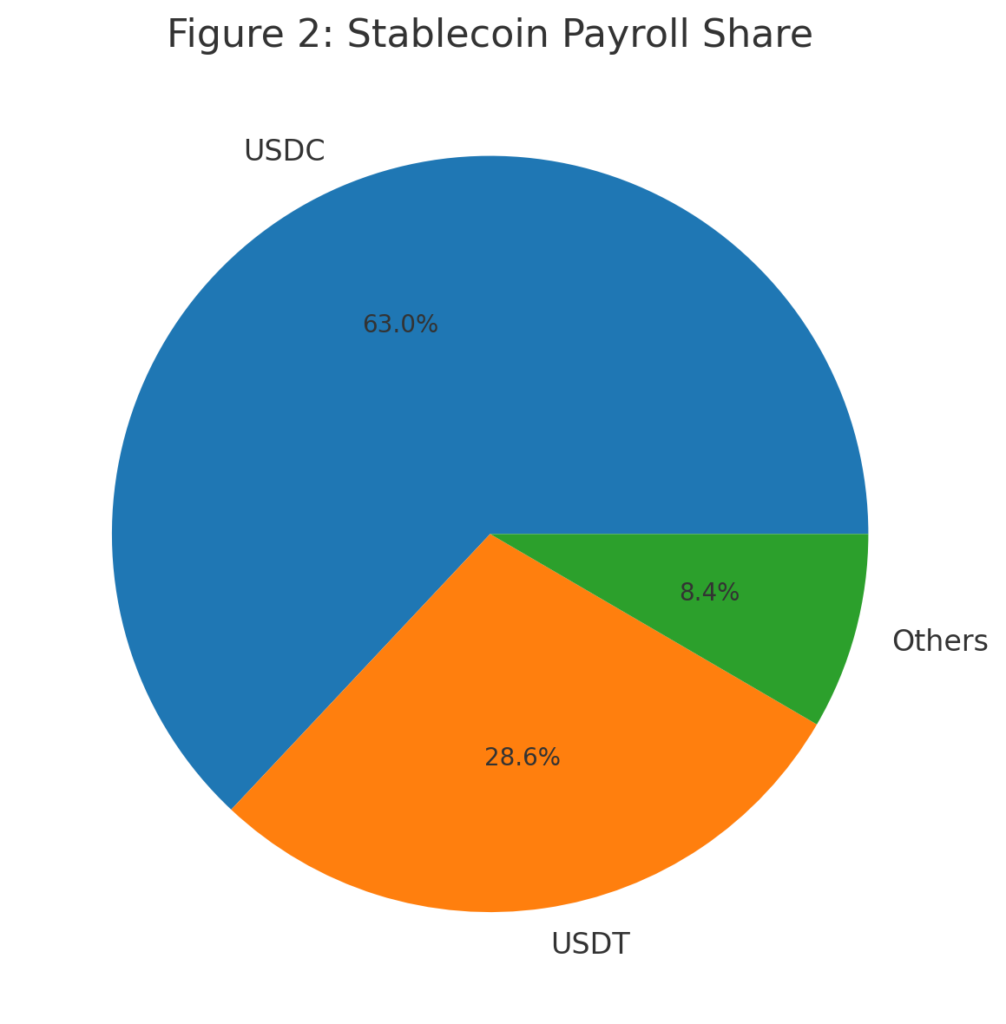
3. Stablecoin Market Expansion in 2024
The total market capitalization of all stablecoins reached $268.6 billion, up sharply from previous years as institutional and retail demand climbed. This influx of capital underpins the growth of on-chain payments, DeFi lending, and corporate treasury use cases. With stablecoins increasingly viewed as a bridge between traditional finance and blockchain rails, their market size will likely continue expanding as more companies and regulators embrace digital dollar-pegged assets.
[Insert Figure 3: Stablecoin Market Cap Growth Chart here]
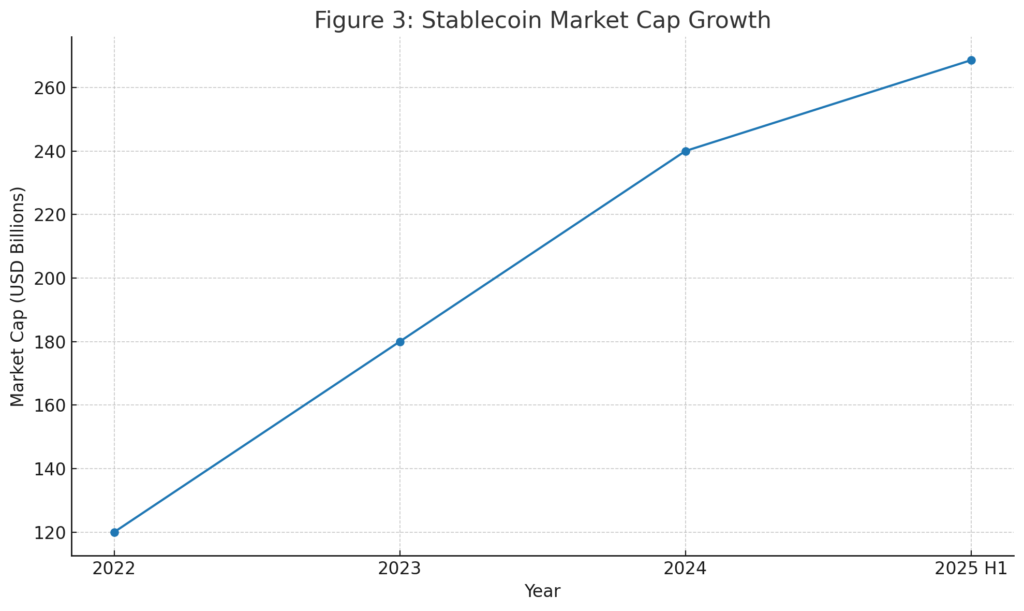
4. Long-Term Alignment: Vesting Schedules
Token-based compensation is not only more common but also better structured for alignment: 88% of token incentives now use a four-year vesting schedule, up from 64% the year before. This shift indicates that employers and employees alike recognize the importance of long-term commitment to project success. Four-year cliffs and monthly vesting have become the industry norm, mirroring traditional tech equity plans but with the added flexibility of programmable tokens.
[Insert Figure 4: Vesting Schedule Adoption Chart here]
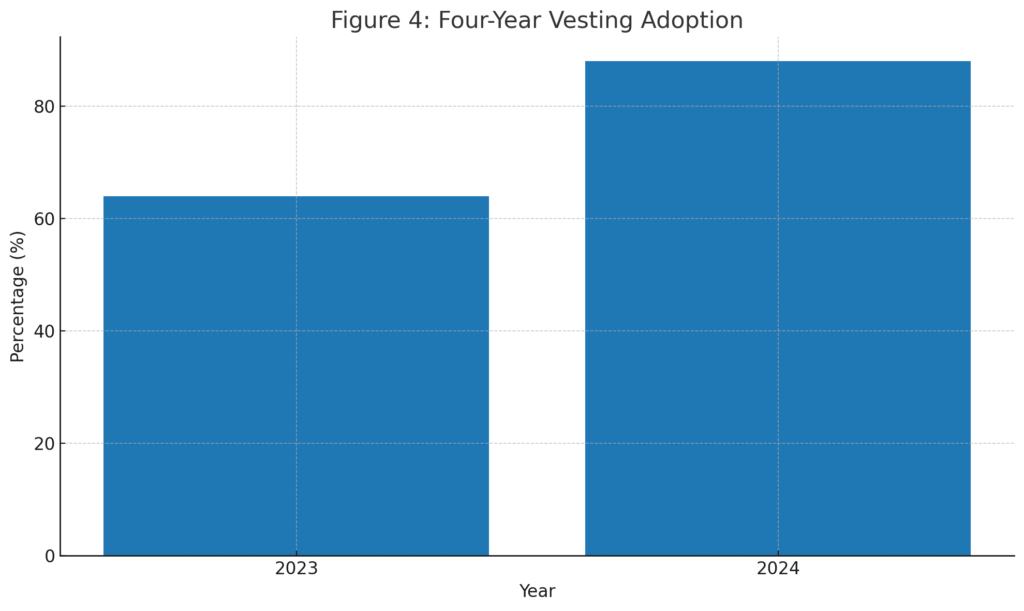
5. Education vs Experience: Compensation by Credentials
Contrary to many industries, blockchain firms value practical expertise over advanced degrees. The survey found that professionals with a Bachelor’s degree earn an average of $286,039, surpassing those with a Master’s ($214,359) or PhD ($226,858). This premium on hands-on skills and real-world contributions underscores the talent-driven nature of the crypto sector, where coding chops and protocol experience often outweigh formal academic credentials.
[Insert Figure 5: Average Salary by Education Level Chart here]
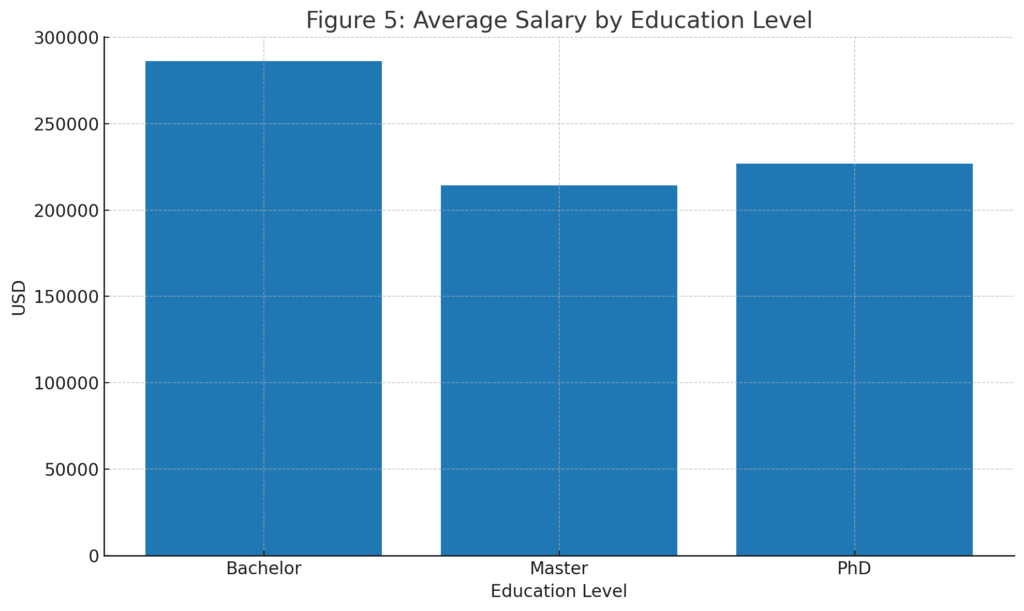
6. Regulatory Landscape Shaping Stablecoin Salaries
United States (GENIUS Act): In July 2025, President Trump signed the GENIUS Act, establishing the first federal framework for stablecoins and requiring full reserve backing and federal charters for issuers. This clarity has bolstered confidence in US-regulated stablecoins for payroll and treasury functions.
European Union (MiCA): Since December 2024, MiCA (Markets in Crypto-Assets Regulation) mandates licensing, audited reserves, and consumer protections for e-money tokens and asset-referenced tokens across all 27 member states. Passporting rights under MiCA allow compliant issuers to operate EU-wide, fostering cross-border payroll solutions.
Asia and Beyond: Jurisdictions from Singapore to Hong Kong are testing regulatory sandboxes, while countries like Japan are exploring stablecoin use in corporate payments. This patchwork of frameworks encourages platforms to support multiple stablecoin types and dynamic compliance.
7. Toward Mainstream Adoption: PayPal and Enterprise Solutions
PayPal’s July 2025 launch of “Pay with Crypto” for U.S. merchants represents a major step toward mainstreaming digital-asset payments. Merchants can accept over 100 cryptocurrencies, with PayPal automatically converting receipts into fiat or its own PYUSD stablecoin (backed 1:1 by U.S. dollars and offering 4% annual rewards). This integration lowers transaction costs by up to 90% compared to credit cards and taps into PayPal’s 650 million+ user base, accelerating stablecoin’s role in everyday commerce and payroll.
Similarly, payroll platforms like Deel, Remote, and Rippling are enhancing their APIs to support blockchain-native payroll, enabling global teams to get paid faster and more cheaply in stablecoins.
8. Global Adoption and Regional Disparities
While U.S. and Canadian engineers earn an average of $177,653, their peers in Europe and Asia report median salaries of $112,476 and $100,000 respectively. This geographic pay gap incentivizes companies to build distributed teams and leverage stablecoin payroll for cost efficiency. At the same time, younger professionals (75% of survey respondents) express a preference for stablecoin salaries, viewing them as an attractive hedge against local currency volatility and banking frictions.
9. The Road Ahead: Innovations and Challenges
As stablecoin payroll gains momentum, key challenges remain:
- Volatility Management: Enterprises must hedge against sudden stablecoin depegs or liquidity shocks.
- Tax and Compliance: Jurisdictions are still defining tax treatments for crypto salaries and issuer requirements.
- Infrastructure Maturity: On-chain payroll tooling needs to integrate seamlessly with existing HR and ERP systems.
Opportunities abound in programmable compensation—automatic performance-based token bonuses, cross-border micropayments, and real-time vesting linked to milestone deliveries. As regulation matures and platforms innovate, stablecoin payroll could become the backbone of a truly global, trustless workforce ecosystem.
Conclusion
The surge in stablecoin-based payroll—from 3% to 9.6% in just one year—signals a pivotal shift toward blockchain-native compensation models. With USDC’s dominance, a near $270 billion market cap, long-term vesting trends, and competitive salary benchmarks, the crypto industry is redefining how value is created and shared. As regulatory frameworks like the GENIUS Act and MiCA provide clarity, and enterprise solutions from PayPal to Deel expand, the path to mainstream adoption becomes clearer. For businesses and professionals alike, mastering stablecoin payroll is not just about faster payments; it’s about embracing a new frontier of financial innovation, alignment, and global opportunity.

